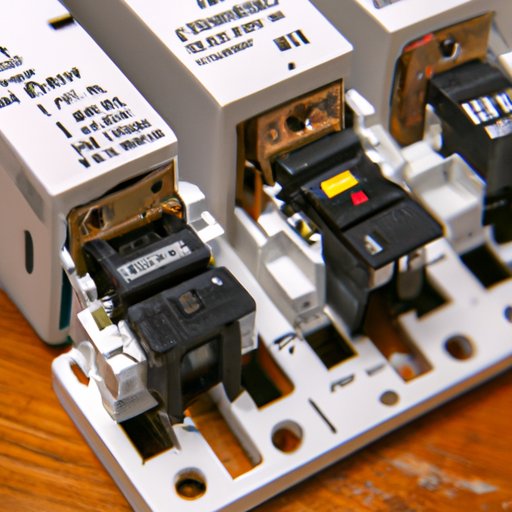Introduction
If you’ve ever experienced a breaker switch trip, then you know how frustrating it can be. It’s important to understand the reason behind the tripping so that you can prevent it from happening again in the future. In this article, we’ll explore why breaker switches keep tripping and how to troubleshoot the problem.
Troubleshooting Common Breaker Switch Tripping Problems
When a breaker switch trips, it’s usually due to an overloaded circuit or a faulty wiring issue. To identify the cause of the problem, it’s important to first test the electrical system for any issues. This can be done with a voltage tester, which will detect any loose connections or faulty wiring.
Once you’ve identified the problem, you may need to replace certain components of the electrical system. This could include replacing the breaker switch itself, as well as any loose connections or damaged wires. If the problem persists after replacing the components, then it’s likely due to an underlying issue such as an overloaded circuit or aging breakers.
Understanding the Causes of Breaker Switch Tripping
There are several possible causes of breaker switch tripping. The most common cause is an overloaded circuit, which occurs when too much electricity is running through a single circuit. This can be caused by having too many appliances connected to the same circuit, or by having high wattage appliances drawing too much power.
Faulty wiring is another common cause of breaker switch trips. This can occur when wires are not properly connected, or when they become worn over time. Aging breakers can also be a culprit, as they may no longer be able to handle the load placed on them. Finally, loose connections can cause tripping, as these can create a short circuit which will cause the breaker to trip.

Preventing Breaker Switch Trips With Simple Maintenance Tips
To prevent breaker switch trips, it’s important to regularly test your breakers and ensure that all connections are tight. Additionally, it’s important to keep your circuit loads balanced so that no one circuit is carrying too much power. This can be done by connecting only a few high-wattage appliances to each circuit, and spreading out the rest of your appliances across multiple circuits.

An Overview of Electrical Safety for Breaker Switch Tripping Issues
Before attempting to diagnose or fix any breaker switch tripping issues, it’s important to understand local electrical codes and wear proper safety gear. Additionally, you should always make sure that you know how to shut off power before attempting to make repairs. Taking the necessary safety precautions can help ensure that you don’t get injured while making repairs.

How to Diagnose and Fix Breaker Switch Tripping Problems
To diagnose breaker switch tripping problems, the first step is to inspect your electrical system. Look for any signs of wear or damage, such as frayed wires or loose connections. Once you’ve identified the problem areas, you can make the necessary repairs. This could involve replacing the breaker switch itself, replacing any faulty wiring, or tightening loose connections.
Conclusion
Breaker switch trips can be incredibly frustrating, but understanding the causes and taking the proper safety precautions can help you avoid them. Troubleshooting common problems involves inspecting the electrical system, identifying problem areas, and making necessary repairs. With regular maintenance and testing, you can keep your breaker switch in working order and prevent future trips.
(Note: Is this article not meeting your expectations? Do you have knowledge or insights to share? Unlock new opportunities and expand your reach by joining our authors team. Click Registration to join us and share your expertise with our readers.)
